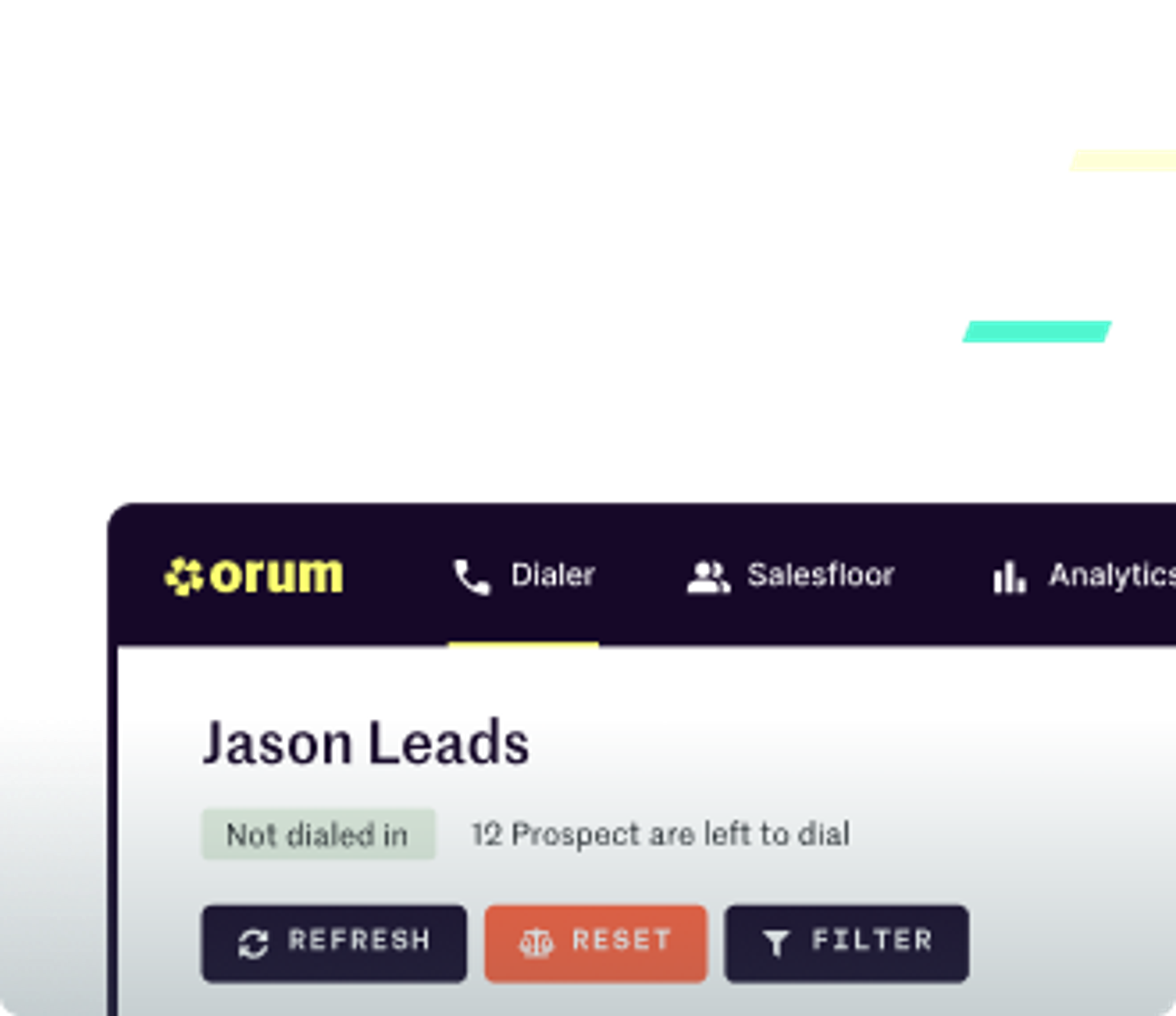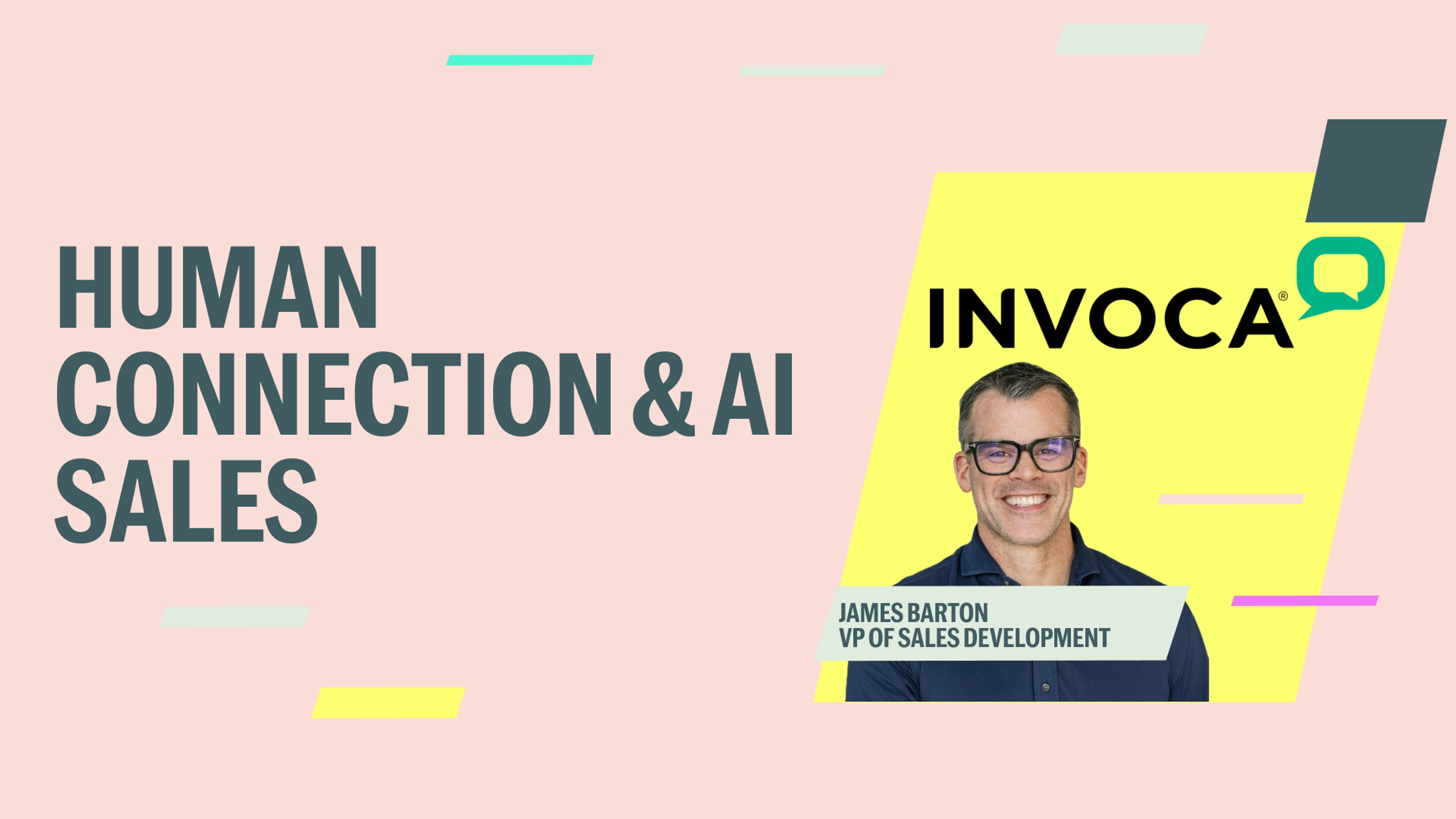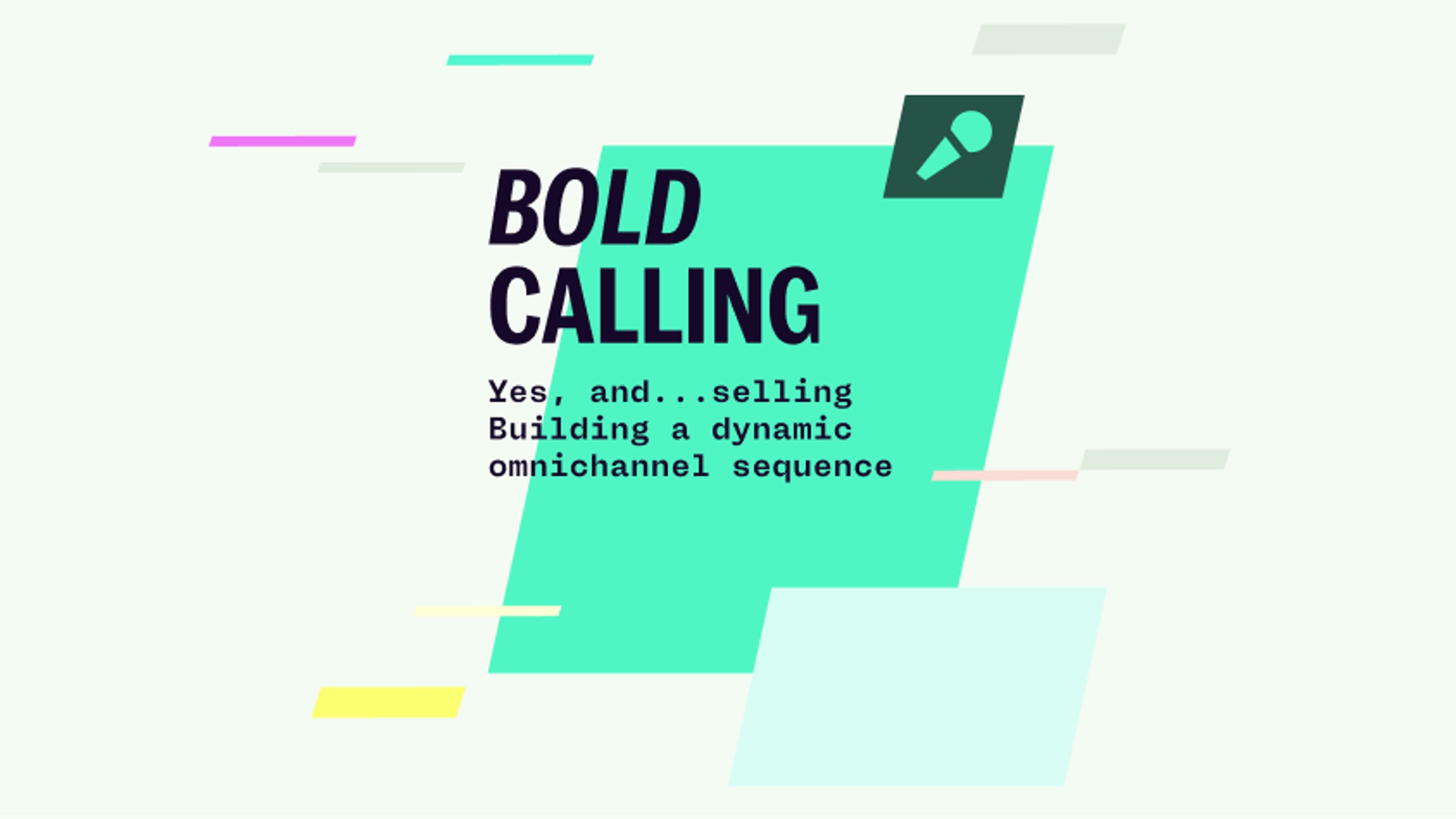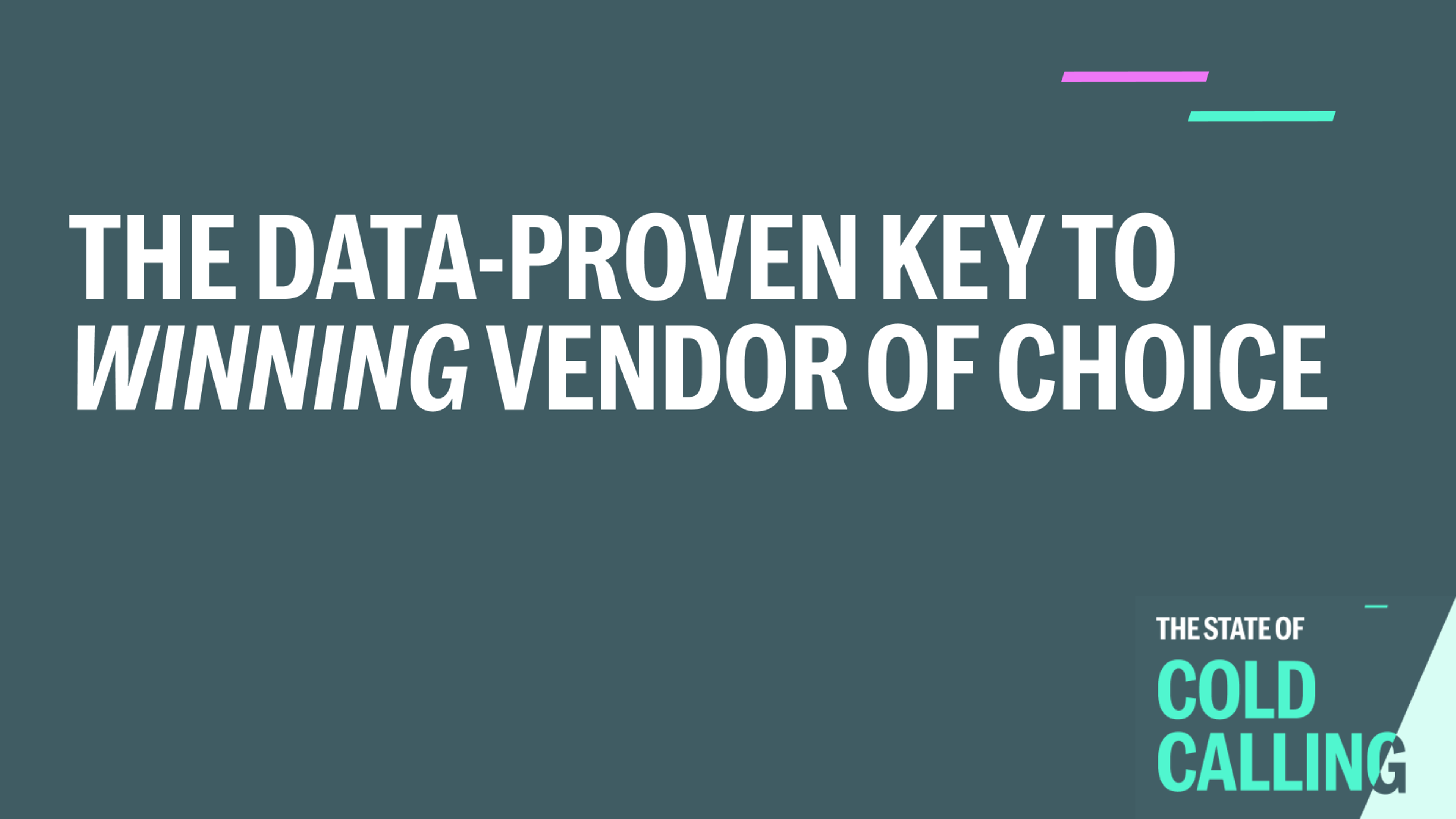Guide to Building a B2B SaaS Customer Journey Map in 6 Steps

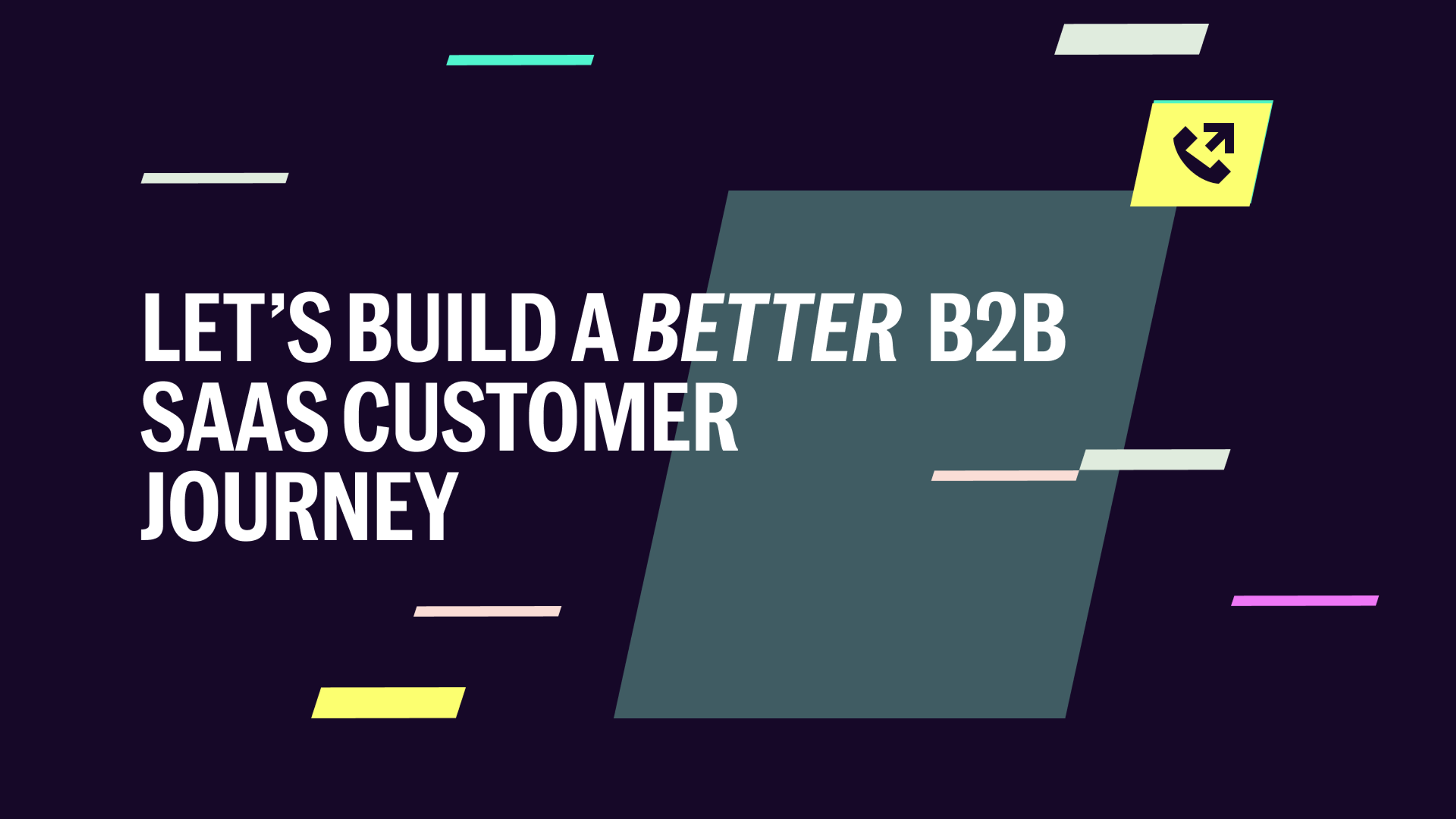
Most guides describe the SaaS customer journey but don’t explain how to map it. They define stages and list touchpoints, leaving you with a high-level framework that’s difficult to apply.
You already know your buyers move through stages. You need a clear, actionable process to define those stages, remove friction, and turn more leads into customers.
That’s exactly where this guide can help. We’ll break down six key steps to help you identify friction points, improve conversion rates, and create a seamless customer experience.
And because your customer journey isn’t static, we’ll also show you how to use real-time insights to optimize it over time. Let’s see how your team can work smarter and turn more potential customers into loyal ones.
Make every touchpoint count
Orum gives your salespeople real-time insights, AI-powered dialing, and automated follow-ups, so they can reach the right prospects at the right time.
How customer journey maps help you improve pipeline and conversions
A strong pipeline is built through two main activities:
- Generating leads
- Ensuring they move through each stage efficiently
Too often, deals stall, prospects disengage, and sales teams struggle to understand why this is happening or how to fix it. Luckily, a well-built customer journey map makes the invisible visible.
Pinpoint where deals stall and why prospects disengage
Your team is great at booking discovery calls, but conversion rates are low. A customer journey map might reveal that prospects aren’t receiving timely follow-ups. Or worse, they’re being hit with generic, misaligned messaging that doesn’t connect with their specific pain points.
What to do:
- Map out the engagement timeline to see where follow-ups are delayed or inconsistent
- Identify gaps in rep handoffs, email sequences, or next-step clarity
- Automate follow-ups with an AI-powered dialer to keep prospects engaged at the right moments
Orum’s AI-powered Dialer helps sales teams prevent deals from stalling by eliminating the delays that cause prospects to disengage. Your reps can reach prospects faster by automating dialing, skipping bad numbers, and filtering out voicemails.

Use data to identify inefficiencies in outbound prospecting
Outbound teams burn time on low-connect calls, slow responses, and poor-quality lists. Without efficient sales tracking, it’s hard to fix these issues. This is why SaaS companies must prioritize understanding customer interaction quality across all touchpoints.
What to do:
- Track connect rates, response times, and follow-up frequency to pinpoint weak spots.
- See where potential customers drop off (e.g., is messaging unclear, timing off, follow-up inconsistent).
- Adjust outreach cadences and targeting to focus on high-intent leads.
Knowing when to call is one of the most impactful metrics to help your team improve their calling outcomes. Orum lets you know what times of day your reps are getting the highest connect rates so that they can optimize their calling hours.
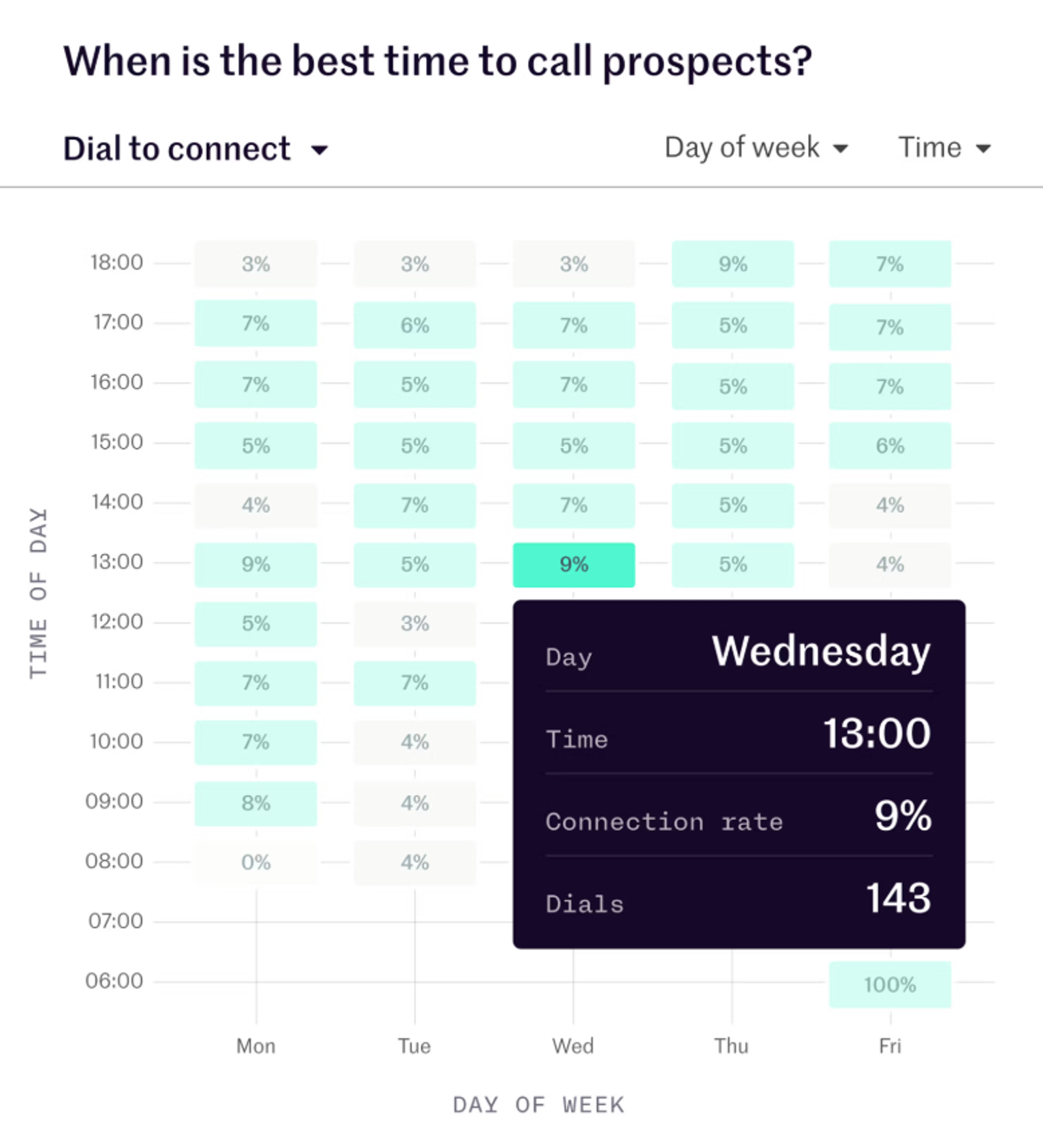
Fix sales bottlenecks with automation and AI-powered insights
Sales teams often don’t see bottlenecks until they hurt revenue. A customer journey map makes them clear. It can show that leads stall in qualification because reps follow up too late. Pipeline gaps may be killing deals due to poor timing or inconsistent messaging. Slow response times could also lead to missed opportunities.
What to do:
- Use AI-powered insights to spot deal slowdowns in real-time.
- Automate follow-ups, reminders, and next steps to prevent pipeline leaks.
- Overlay customer data from your CRM with sales data to reduce delays and improve efficiency.
For example, if a rep is working on a high-priority deal, Orum’s integration with different CRMs can pull in lead details, past interactions, and deal stage data before the call. This means reps can personalize conversations, engage prospects at the right moment, and update records instantly without switching tabs or manually entering data.
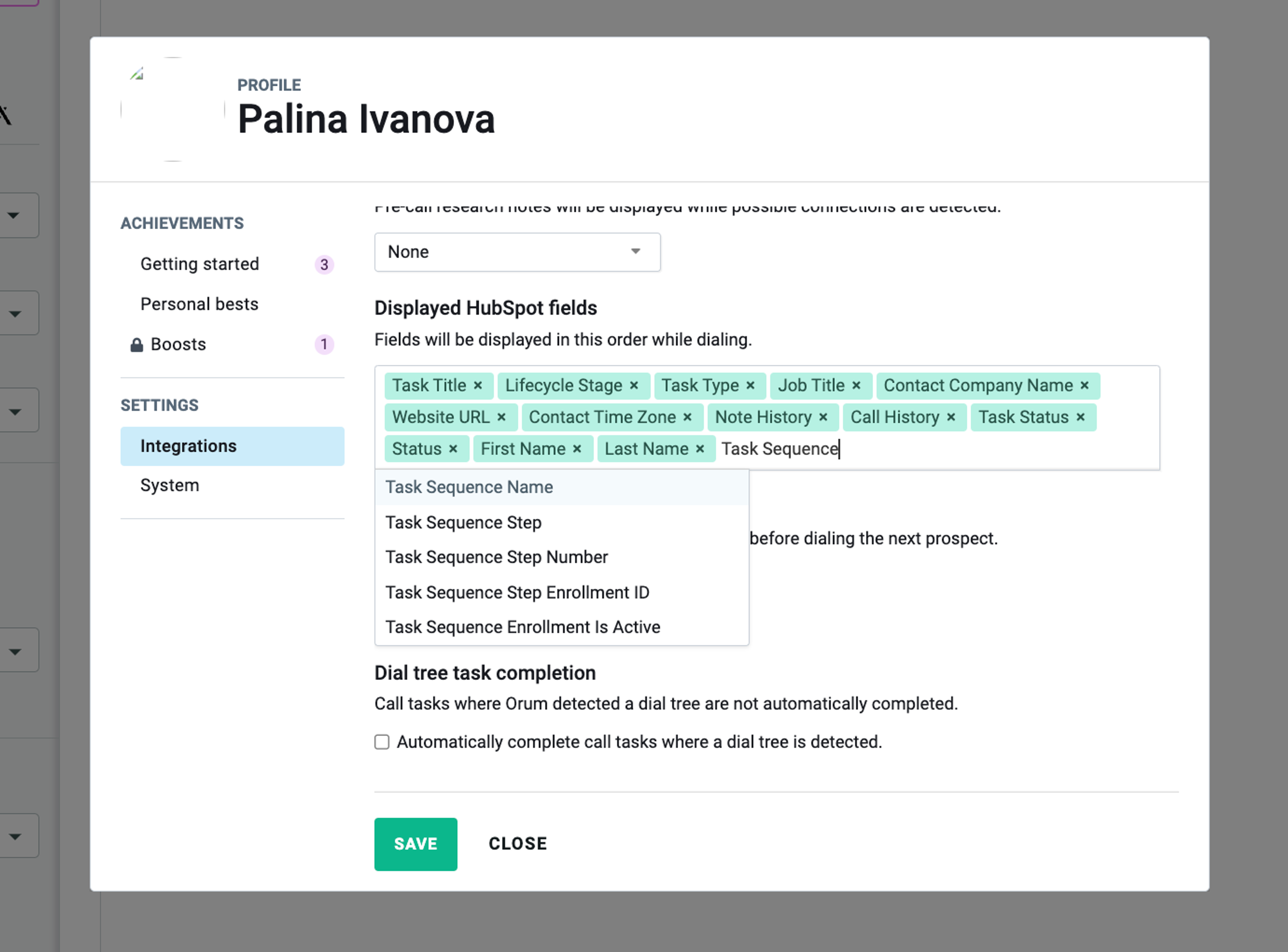
With seamless CRM sync, every call and touchpoint is logged automatically. This keeps all records accurate without extra admin work, which matters across the entire customer lifecycle.
Align sales and customer success teams to improve retention
The customer journey doesn’t end at the sale. What happens post-sale, from onboarding to ongoing engagement and support, determines long-term customer retention.
A strong overview of the journey helps you spot the weak links in your handoffs before they turn into churn. It can help you answer important questions.
For example, are customers getting lost between sales and customer success? Do new accounts stall because the onboarding process isn’t clear? Is there a gap between what was promised and what’s being delivered?
What to do:
- Map a proper handoff process to ensure seamless rep-to-CSM transitions.
- Identify post-sale drop-off points and improve onboarding workflows.
- Track customer interactions over time to proactively address engagement issues.
💡 Pro tip
Optimizing for better customer satisfaction is a never-ending process. Your customer support needs to fix issues efficiently and with care and prevent them from happening. Set up milestone check-ins after onboarding, monitor early usage patterns, and use AI-driven insights to flag disengaged accounts.Measure impact and iterate based on live performance data
A static SaaS customer journey map will soon become outdated. Customer behaviors shift, markets change, and sales strategies must keep up. The only way to stay ahead is by tracking sales KPIs in real-time and adjusting fast.
What to do:
- Track conversion rates at every stage to see exactly where deals stall and why.
- Always adjust quotas, outreach strategies, and rep benchmarks based on live, real-world data (sales performance optimization never really stops).
- Use AI-driven insights to identify emerging patterns and refine your approach before revenue takes a hit.
A well-optimized customer journey map reduces the cost of sales. So, instead of waiting for the end of the quarter to see what went wrong and losing money, sales leaders can stay proactive using Orum. They get instant insights into call activity, connect rates, and follow-up timing.
Additionally, if reps aren’t reaching enough prospects or dropping leads too soon, Orum’s AI-driven analytics flag the issue early so that you can adjust in real-time. Automated reporting eliminates guesswork, ensuring sales strategies are based on live data, not outdated assumptions.
6 Steps to building a SaaS customer journey map
For SaaS businesses, customer journey maps are key strategic tools. They should help sales teams understand how buyers move from first touch to long-term customer. Here’s how to build one that actually makes a difference.
Step 1: Define customer personas and their challenges
Let’s say you’re a SaaS company selling analytics. A VP of Sales cares about hitting revenue targets, while a Head of Customer Success is focused on reducing churn.
If you treat them the same, your messaging will not resonate. The VP needs to hear how your product features improve forecasting and pipeline efficiency, and the CS leader needs to see how they can drive adoption and retention.
Your journey map won't reflect reality if you don’t deeply understand your buyers. Start by defining clear customer personas based on real data, not your assumptions. Here’s how to do it:
- Analyze your best customers: Look at who converts, renews, and expands. What roles do they hold? What industries do they come from? Who is your ideal customer?
- Identify decision-makers vs. influencers: Who signs the deal? Who gathers information? Who drives adoption?
- Understand their pain points: Analyze existing case studies. What challenges push them to seek a solution? What’s stopping them from solving the problem today?
- Map their goals to your solution: How does your SaaS product help them hit their KPIs? What outcomes matter most to them?
- Use real data, not assumptions: Pull insights from CRM records, call transcripts, customer interviews, and support tickets.
- Refine as you go: Personas evolve, so gather insights and adjust based on real buyer behavior. This will also be key to developing new features.
Once you define your personas, it’s time to understand key journey stages.
Step 2: Identify key journey stages from awareness to advocacy
If you’ve been in the SaaS business for any amount of time, you know that the path to conversion is often unpredictable and non-linear.
Most companies monitor these stages: Awareness, consideration, decision, and retention. However, a journey map should also reflect how your buyers move through the process and be complementary to SaaS sales pipeline stages.
For example, what happens between a first demo and a signed contract? Is there a pricing discussion? A technical validation? What internal approvals slow deals down?
Mapping out these micro-stages helps you spot delays, optimize messaging, and keep deals moving.
💡 Pro tip
Don’t stop at “closed-won.” The best customer journey maps extend beyond the sale into onboarding, adoption, and advocacy. If your SaaS product is sticky and delivers value quickly, your sales team will create upselling and cross-selling opportunities easier. If the product is loved, you can also expect new customers through referrals. With the right approach, you’ll be able to continuously increase customer lifetime value.Step 3: Map out touchpoints and interactions across channels
Every interaction counts. From the first website visit to a renewal call, every step shapes the customer experience. It’s beneficial to pause and think about whether you’ve been focusing too much on the sales funnel and ignoring critical touchpoints, for example:
- Marketing content (Do webinars, social media posts and other content formats match sales conversations or create disconnects?)
- Sales outreach (Are reps engaging at the right time with the right message?)
- Onboarding and support (Are customers getting proactive help, or are they struggling in silence?)
If your sales team is sending one message while marketing is pushing another, you’re losing deals before they even get to a demo. A strong customer journey map reveals these misalignments so you can fix them fast.
Step 4: Leverage data and customer insights to refine the journey
A journey map built on guesswork won’t help you close more deals. You have to use real data to validate each stage. It’s a non-negotiable. Here are a few good places to start:
- CRM integrations help track how prospects actually move through the funnel (it’s much easier to discover drop-off points and conversion trends).
- Call analytics and AI insights highlight which objections, pricing concerns, or competitor mentions slow down deals.
- Customer feedback and interviews reveal pain points and missed opportunities that metrics alone won’t show.
For example, if CRM data shows that most deals stall after the first call, you can analyze whether follow-ups are happening too late, messaging is unclear, or decision-makers aren’t engaged early enough. Data can solve most sales challenges. Getting to the root cause is easier when you know where to look.
Step 5: Visualize the journey with a structured map
Once you’ve identified personas, stages, and touchpoints, build a visual representation of the journey. A well-structured map helps you see friction points at a glance and align on strategy.
Your journey map should answer key questions:
- Where do most prospects drop off, and why?
- Are there gaps where leads go silent?
- How does each touchpoint contribute to the buying decision?
Instead of a static diagram, turn your map into an interactive, living resource. Make it part of team meetings, use it to guide training, and update it as your sales process evolves.
You don’t need anything complicated, but your tool should be easy to update, collaborate on, and visualize trends.
Miro or Lucidchart are great options, but Figma can do the trick. Most of the tools have drag-and-drop templates you can use for visual mapping. They all make building a customer journey map feel like coloring by numbers.
A horizontal timeline works best, breaking down each stage with:
- Customer actions: What the prospect does (e.g., visits website, books demo)
- Touchpoints: Where interactions happen (e.g., email, sales call, chatbot)
- Pain points: Friction that slows down the journey (e.g., unclear pricing, delayed follow-ups)
- Opportunities for improvement: Where automation or personalization can help
🧠 Good to know: Customer experience ≠ user experience
Customer experience (CX) is the entire journey a customer has with a company, from the first touchpoint to post-purchase support. User experience (UX) is focused specifically on how a customer interacts with a SaaS product. CX is broader, covering sales, service, and brand perception, while UX is about usability, design, and functionality.What’s important here is to have the right data to include in the map, which brings us to the final step.
Step 6: Continuously iterate and improve based on real-world feedback
A customer journey map isn’t a one-time project. It’s a dynamic strategy tool. If it stays the same for an entire year, you can be certain that it’s already outdated. The key is to continuously analyze, adapt, and optimize.
Let’s say your journey map shows prospects booking demos, but conversion rates are dropping afterward. Sales leaders assume it’s a rep performance issue, but after analyzing call recordings and CRM data, a pattern emerges:
- Prospects ask the same pricing questions but don’t get clear answers.
- Decision-makers aren’t involved early enough in the process.
- Follow-ups after demos are slow and generic.
With this insight, the team makes three key changes:
- Sales engineers join high-value demos to clarify pricing and implementation upfront
- AI-powered call cadences prioritize decision-maker outreach earlier in the funnel
- Follow-ups become personalized, reinforcing key pain points and value
The result? Demo-to-close rates improve, sales cycles shorten, and fewer deals stall.
Orum’s Call Library helps teams spot these issues faster by giving sales leaders instant access to real conversations. Instead of guessing why deals stall, they can review top-performing calls, identify gaps in messaging, and coach reps with real examples of great objection handling.
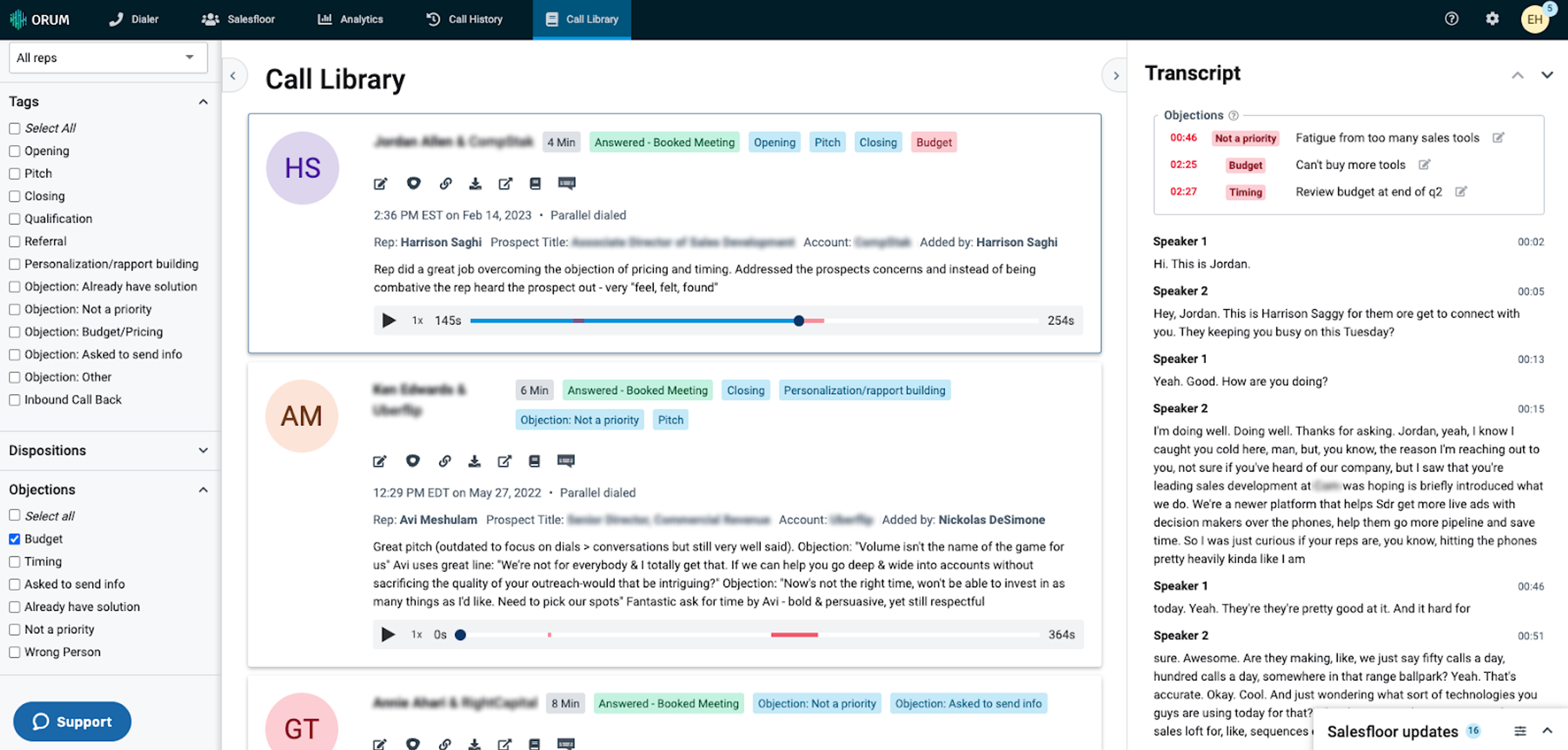
A great SaaS journey map reveals customer needs
If there’s one thing we’d like you to take with you after reading, it’s this: Don’t let journey mapping become a theoretical exercise with no real impact. It’s called a map because it charts the path your customers take, from the first touchpoint to conversion and beyond.
But a map is only useful if you actually use it. So make sure to:
- Track where deals stall
- Identify gaps
- Adjust based on real data
It should be a living tool, not a static document gathering dust.
With the right insights and automation, you can turn your journey map into a real growth engine. Orum helps you stay ahead of deal momentum, engage at the right moments, and create value at every touchpoint.
Make every touchpoint count
Orum gives your salespeople real-time insights, AI-powered dialing, and automated follow-ups, so they can reach the right prospects at the right time.
